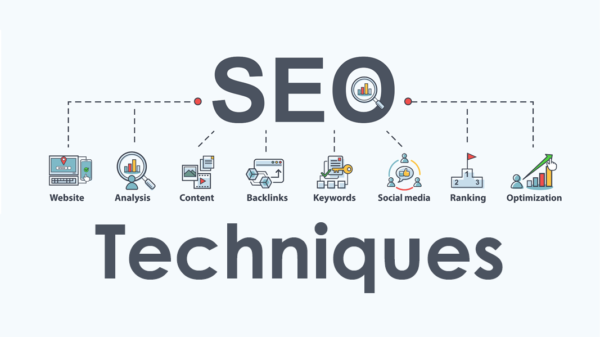In today’s interconnected world, expanding your website’s reach globally is crucial for businesses seeking to tap into international markets.
With the right strategy and implementation, an international SEO Expert (Search Engine Optimization) can significantly enhance your website’s visibility, attract global audiences, and drive organic traffic from various countries.
In this article, we will explore the key aspects of international SEO and provide valuable insights on how to expand your website’s reach globally.
Understand the Importance of International SEO
International SEO refers to the process of optimizing your website and online presence to attract organic traffic from different countries and regions.
It involves tailoring your content, keywords, and website structure to target international audiences effectively.
By implementing international SEO techniques, you can unlock numerous benefits, such as:
a. Global Exposure
International SEO allows your website to appear in search engine results pages (SERPs) across multiple countries, expanding your reach to a global audience.
b. Increased Organic Traffic
By targeting specific keywords and optimizing your content for different regions, you can attract relevant organic traffic from various countries, boosting your website’s visibility and rankings.
c. Enhanced User Experience
A well-executed international SEO strategy ensures that your website is localized and easily accessible to users in different languages and regions, delivering a seamless browsing experience.
d. Higher Conversion Rates
When you provide localized content and cater to the cultural preferences and needs of your international audience, you can significantly improve your conversion rates and generate more sales or leads.
Conduct In-depth Keyword Research
One of the fundamental steps in international SEO is conducting thorough keyword research for each target country or region.
This involves identifying the most relevant and frequently searched keywords in the local language, as well as understanding the local search behavior and preferences.
Use keyword research tools, like Google Keyword Planner or SEMrush, to discover country-specific keywords with high search volumes and moderate competition.
Remember to consider language variations, dialects, and cultural nuances while selecting keywords.
For example, if you’re targeting English-speaking audiences in both the United States and the United Kingdom, you need to account for spelling differences (e.g., “color” vs. “colour”) and regional variations in terminology.
Create High-Quality, Localized Content
To effectively reach international audiences, it is crucial to create high-quality, localized content.
This includes translating your existing content into the local language or producing original content tailored to specific regions.
Localization goes beyond translation; it involves adapting your content to the cultural, social, and linguistic aspects of the target audience.
When creating localized content, consider the following:
a. Language
Ensure accurate translations or hire professional translators to maintain linguistic and cultural integrity.
b. Cultural Relevance
Understand local customs, preferences, and traditions to develop content that resonates with the target audience.
c. SEO Optimization
Incorporate localized keywords naturally within the content, headings, and meta tags to improve search engine visibility.
Implement Geotargeting and Hreflang Tags
Geotargeting is a technique that allows search engines to deliver region-specific content to users based on their location.
By implementing geotargeting, you can specify which country or region each page of your website is targeting, improving its relevance in local search results.
This can be achieved through the use of hreflang tags, which indicate the language and country targeting of a specific page.
By correctly implementing hreflang tags, search engines can understand the language and country variations of your content and display the most appropriate version to users searching from different locations.
This ensures that users find content that matches their language and cultural preferences, leading to better user experience and higher rankings in local SERPs.
Optimize Website Structure and Technical Elements
A well-optimized website structure and technical elements are crucial for international SEO success. Here are a few key considerations:
1. International Domain Structure
Choose an appropriate domain structure, such as country-code top-level domains (ccTLDs), subdomains, or subdirectories, based on your business goals and resources.
Each option has its advantages and considerations, so choose wisely.
2. Website Localization
Localize your website by providing translated content, localized URLs, and localized metadata to enhance the user experience for different regions.
3. Site Speed and Performance
Optimize your website’s loading speed, as faster websites tend to have higher rankings. Minimize HTTP requests, optimize images, and leverage content delivery networks (CDNs) to improve performance.
4. Mobile Optimization
Ensure your website is mobile-friendly and responsive, as mobile usage is dominant in many countries. Google’s mobile-first indexing prioritizes mobile-optimized websites in search rankings.
Build International Backlinks
Backlinks remain a significant factor in SEO, even for international websites. Aim to build high-quality backlinks from reputable websites in your target countries or regions.
Localized content, guest posting, and collaborations with local influencers or businesses can help you acquire relevant international backlinks.
Focus on building a diverse and authoritative backlink profile that demonstrates your website’s credibility and relevance to search engines.
Conclusion
Expanding your website’s reach globally through international SEO requires careful planning, localization, and an understanding of cultural and linguistic nuances.
By implementing key strategies such as conducting thorough keyword research, creating high-quality localized content, implementing geotargeting and hreflang tags, optimizing website structure and technical elements, and building international backlinks, you can successfully attract global audiences and improve your website’s visibility in international markets.
International SEO opens the doors to global exposure, increased organic traffic, enhanced user experience, and higher conversion rates.
By leveraging these revenue-fetching marketing techniques, businesses can tap into new markets, expand their customer base, and drive growth on a global scale.
Embrace the opportunities offered by international SEO and position your website for success in the international arena.











